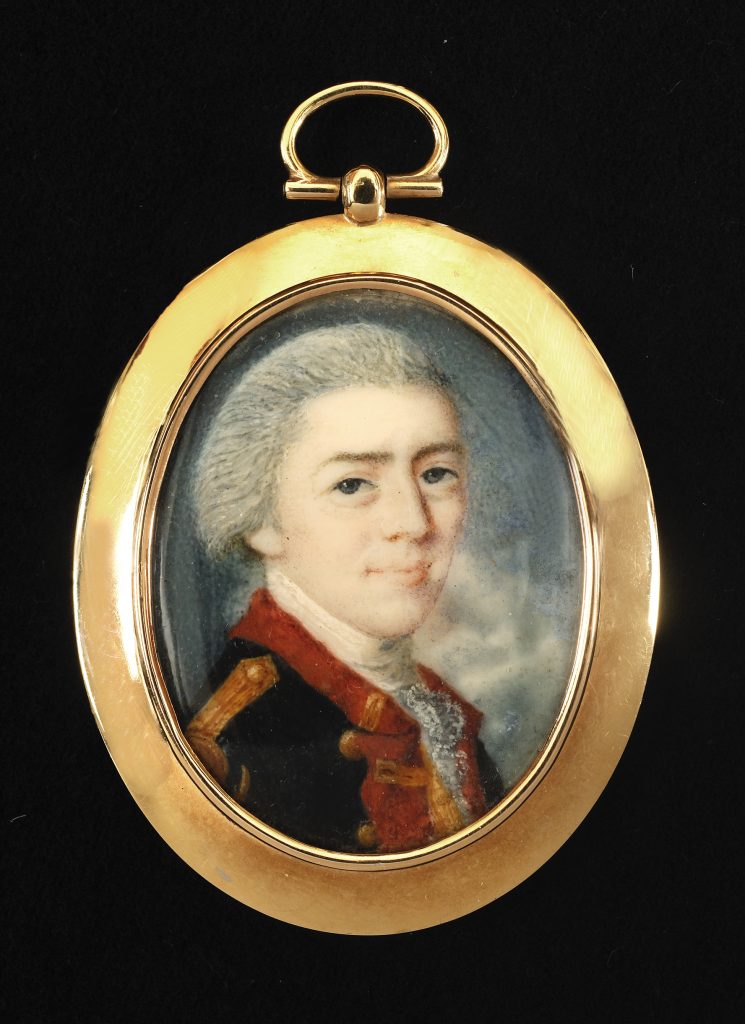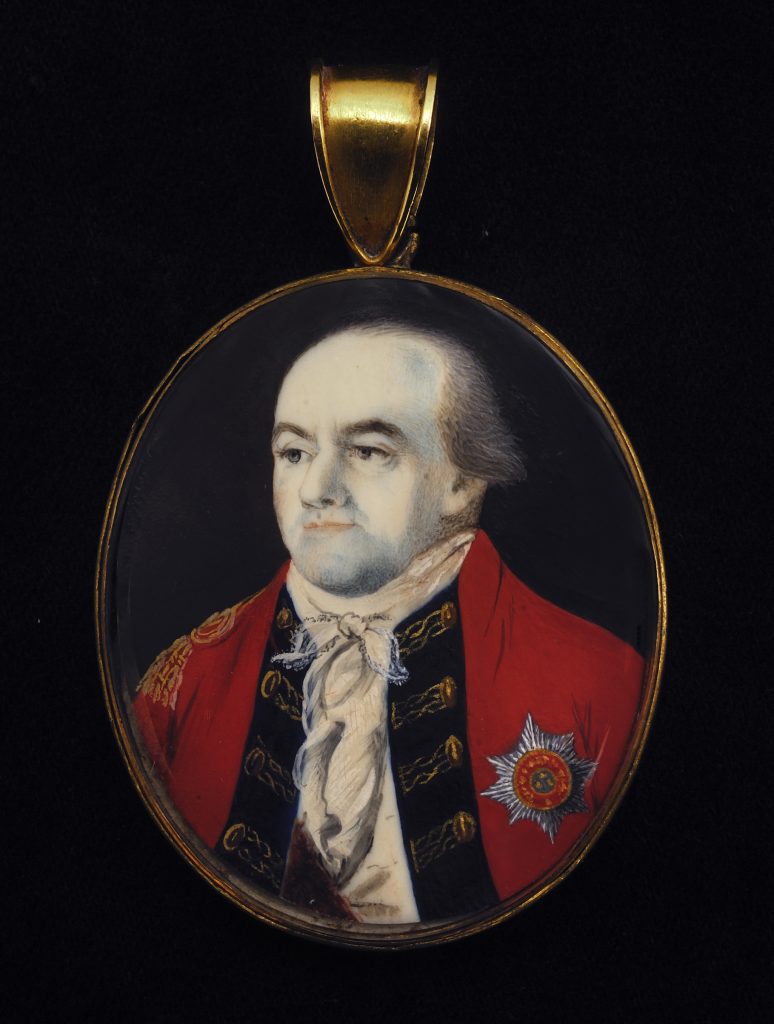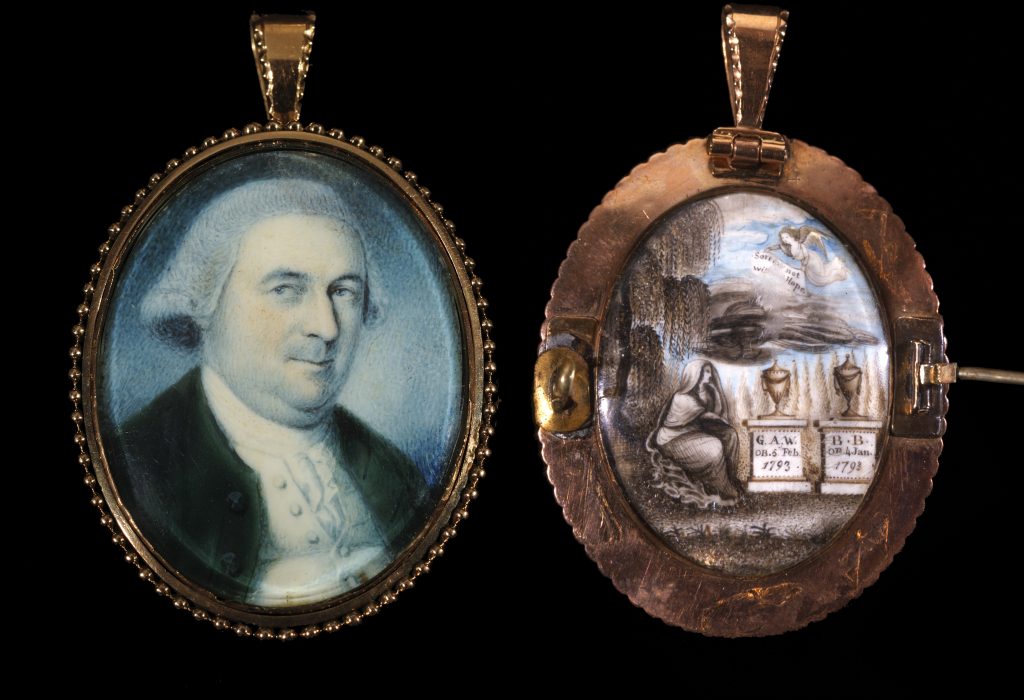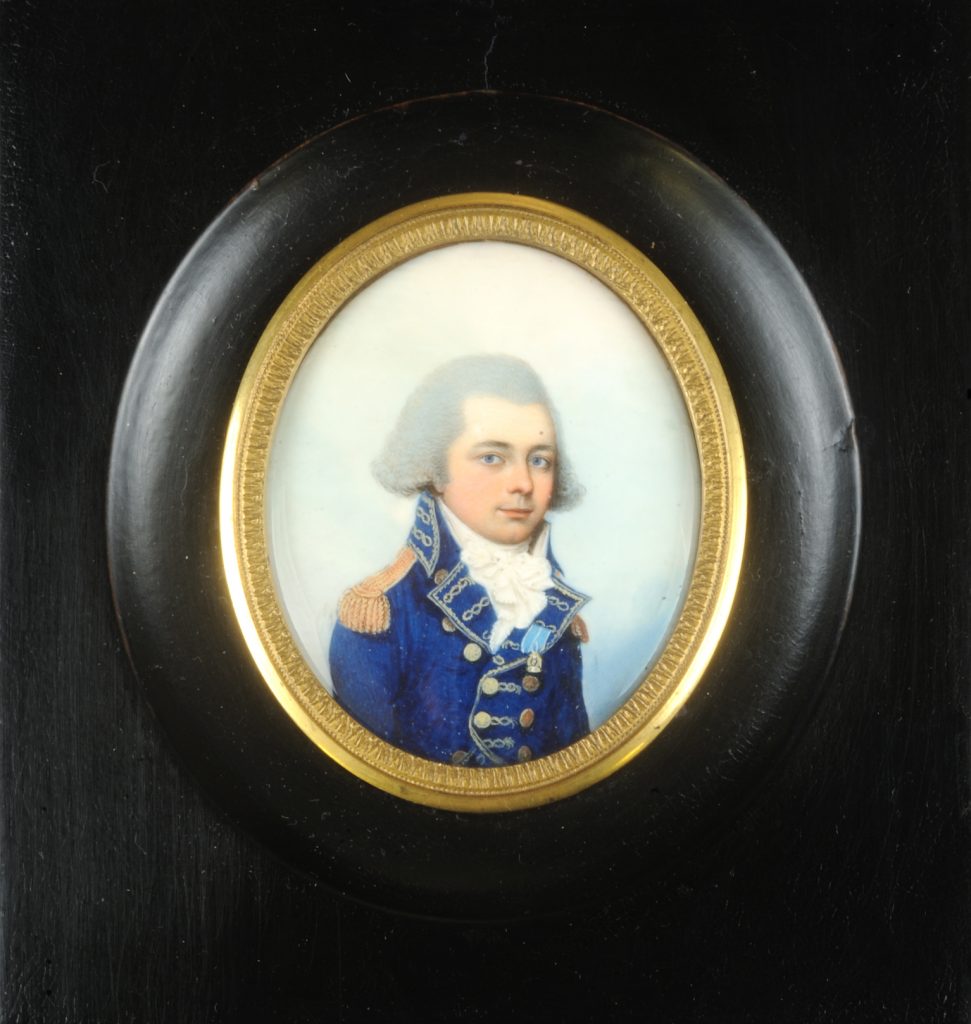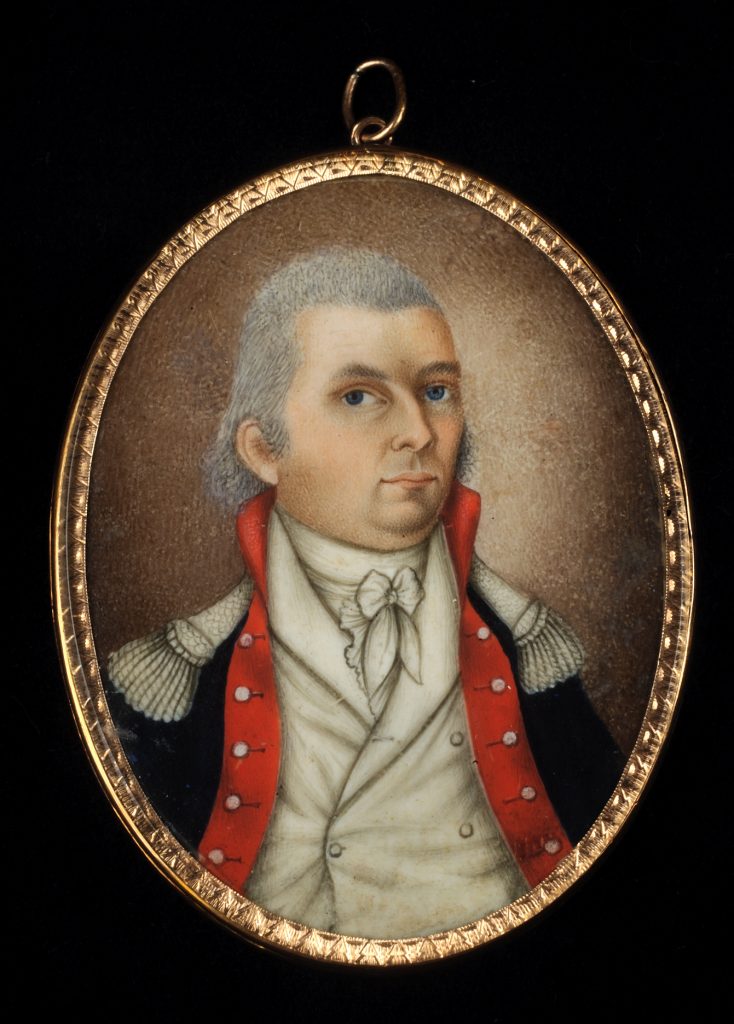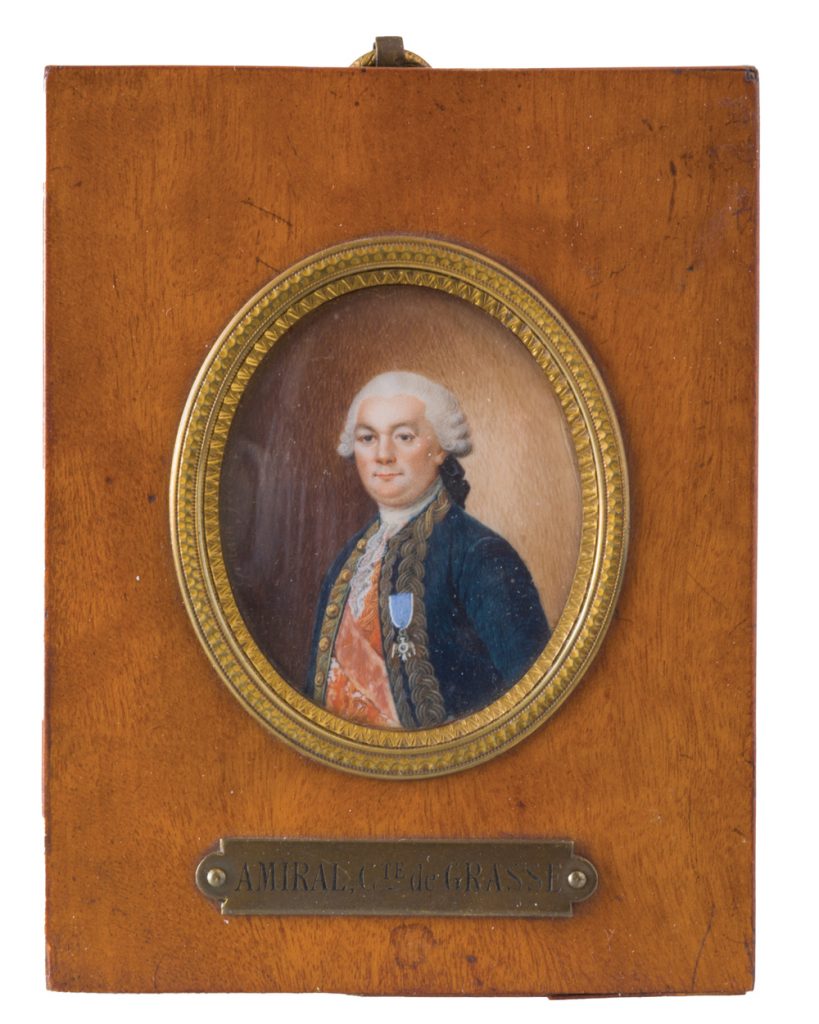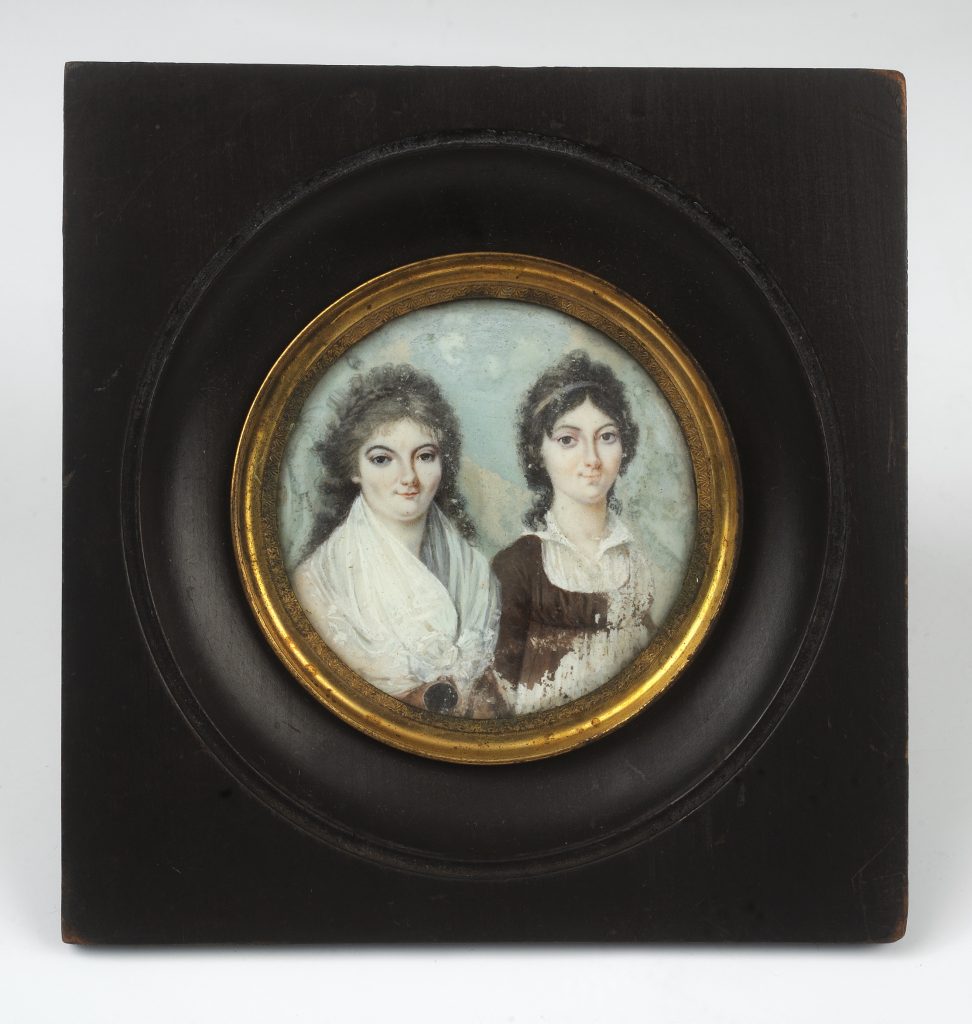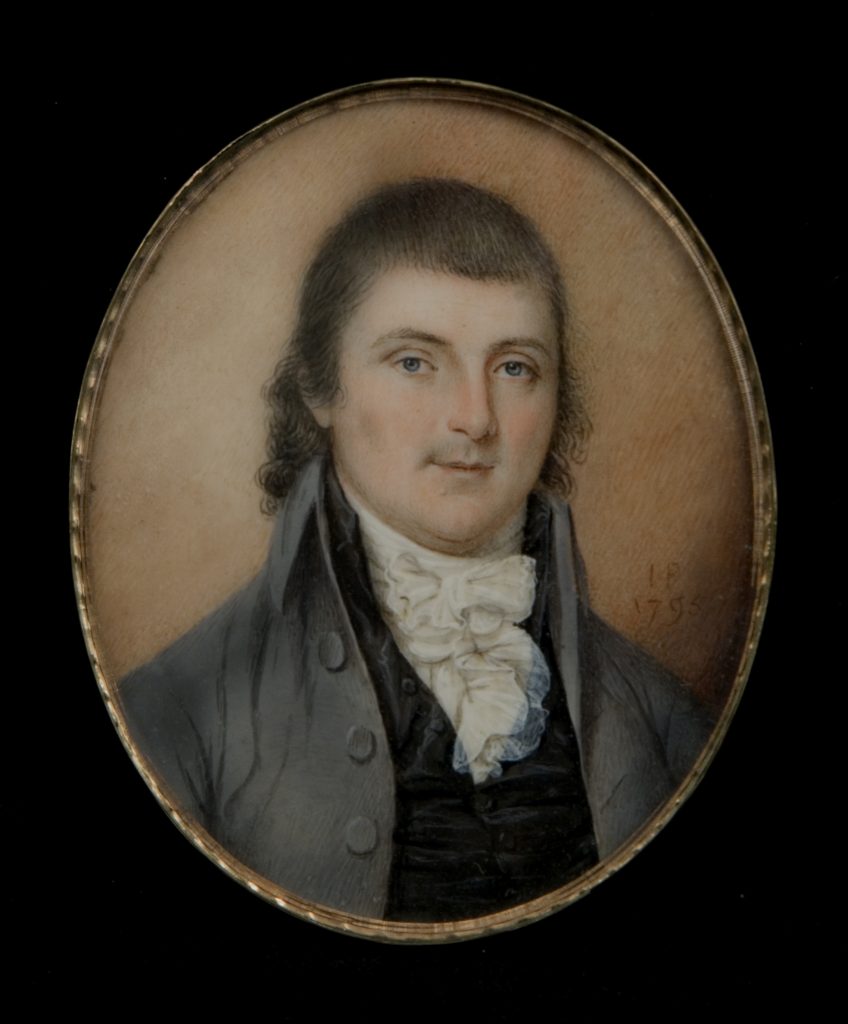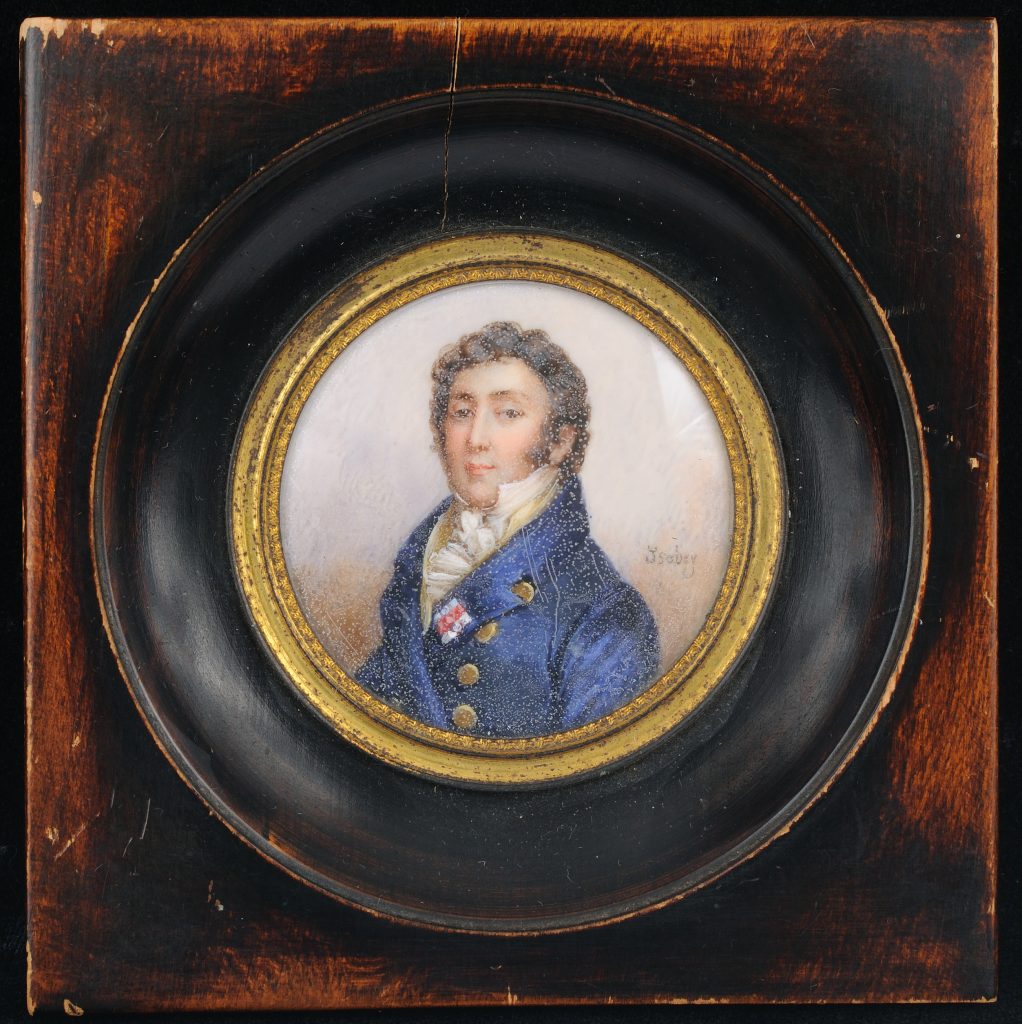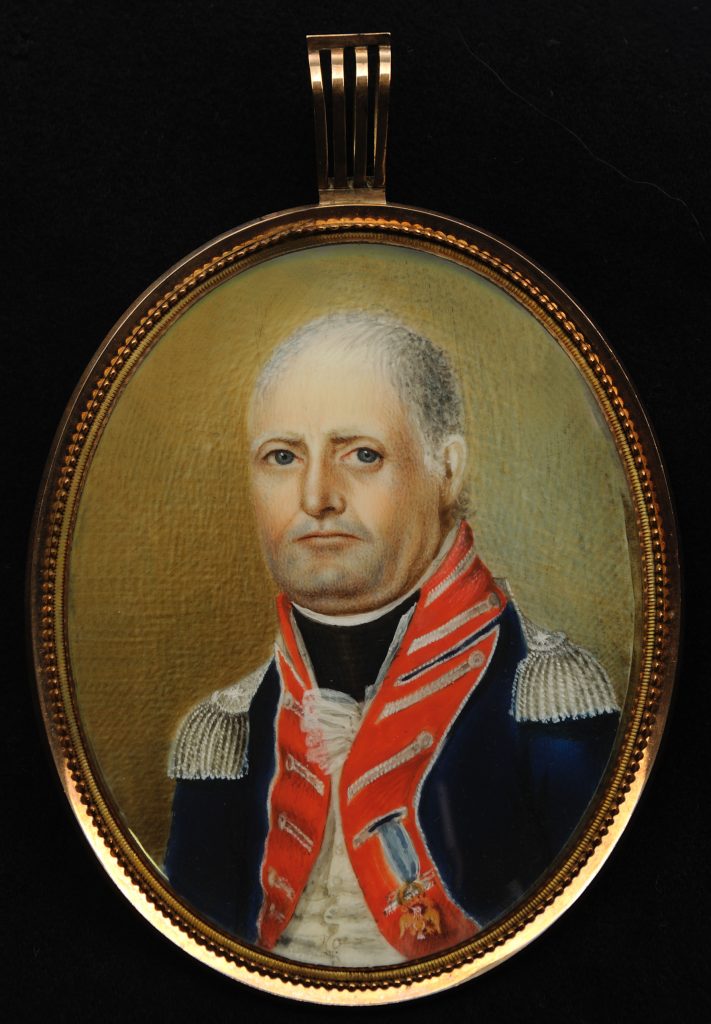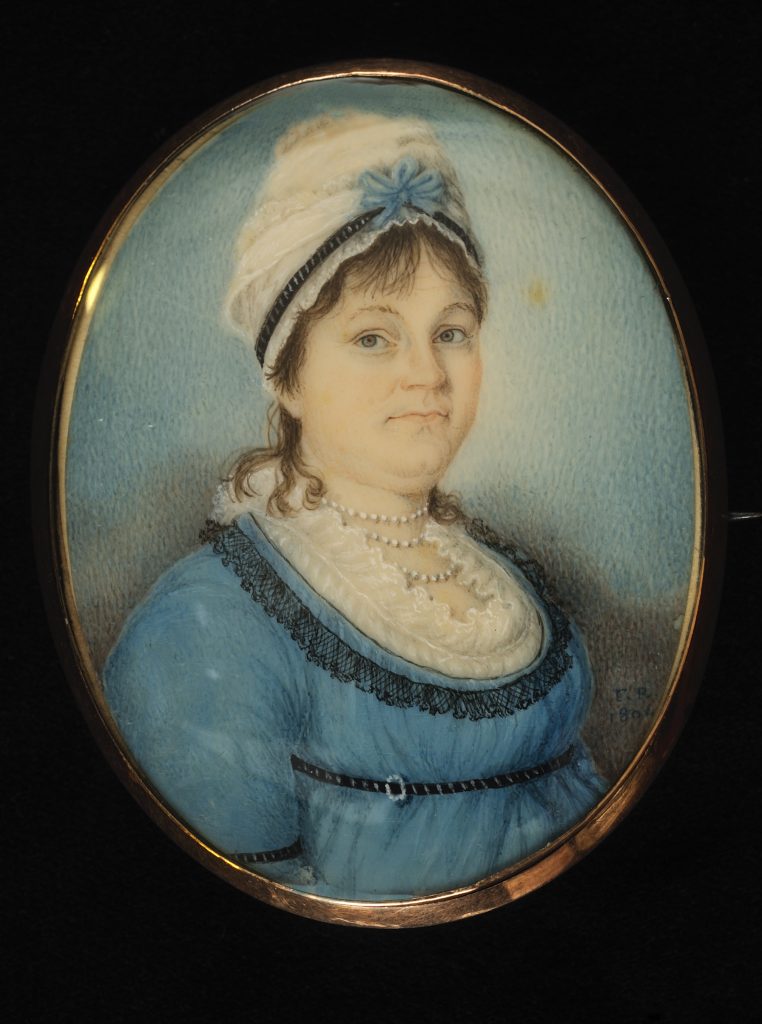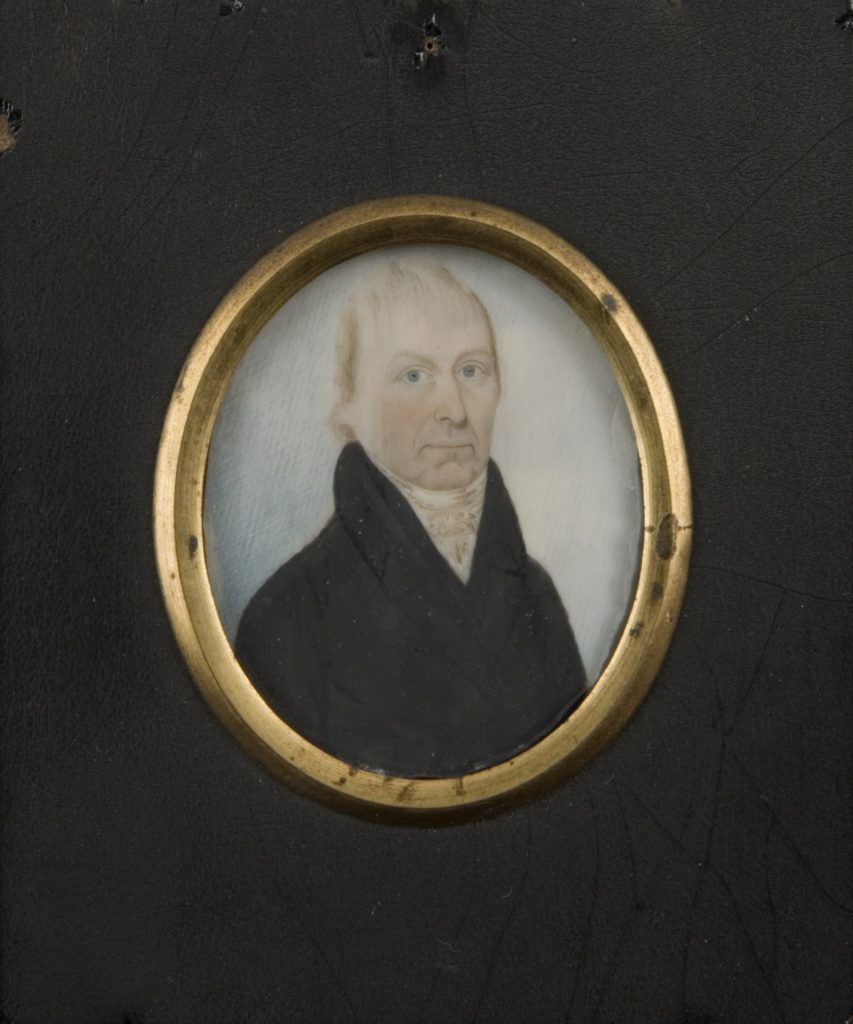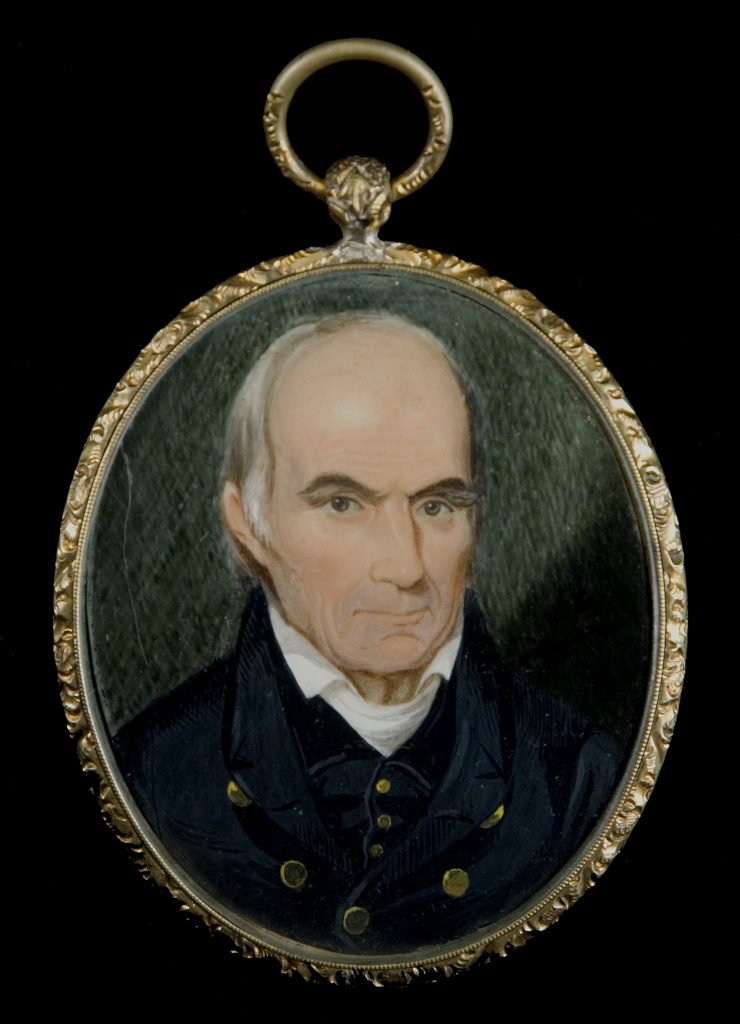In early America and western Europe, portrait miniatures were intimate keepsakes given by the sitter to a loved one to convey their affection and to represent their bond. Miniatures were often commissioned to mark important milestones in life, including marriage, long absences and death. During the American Revolution, soldiers and their families sat for and presented portrait miniatures as a reminder of their loved ones in an uncertain time. Miniatures painted in the decades that followed portray the Revolution’s participants in later years, whether as civilians in the new republic or officers continuing in service in the military.
More than forty portrait miniatures are preserved in the Institute’s collections, picturing American, French and British soldiers of the Revolution, as well as their wives and children. The small but detailed paintings—just a few inches tall—provide highly accurate portrayals of these individuals and the military uniforms that are often depicted. Miniatures by prominent artists such as James and Charles Willson Peale, John Ramage, Charles Fraser and Jean-Baptiste Isabey are included in the collections. Others were painted by itinerant artists whose names have not yet been identified.
Read more about the portrait miniature of William Henry Bruce of Maryland, painted during the Revolution by Charles Willson Peale, in our in-depth article in Masterpieces in Detail.
To learn more about the conservation of two portrait miniatures—of First Lieutenant William Truman Stoddert of Maryland and Colonel George Baylor of Virginia, both painted by Charles Willson Peale—read our feature on the project in Conservation.
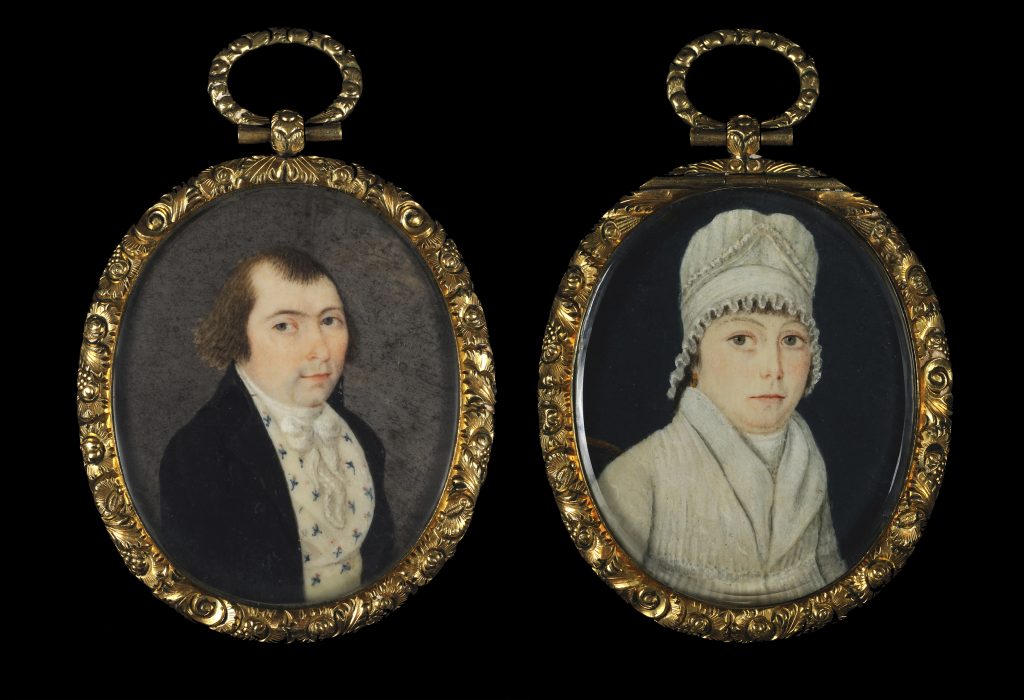
Frederick Weissenfels and Mary Shumur Weissenfels
ca. 1770-1775Gift of David Charles Becker, New York State Society of the Cincinnati, 1990
Prussian-born soldier Frederick Weissenfels settled in New York before the Revolutionary War and served in the New York Continental Line from 1775 to 1781. This pair of watercolor-on-ivory portrait miniatures of Frederick and his first wife, Mary, were painted just before the war. They would have originally been framed separately and were combined in this gold case—one portrait on either side—by a descendent.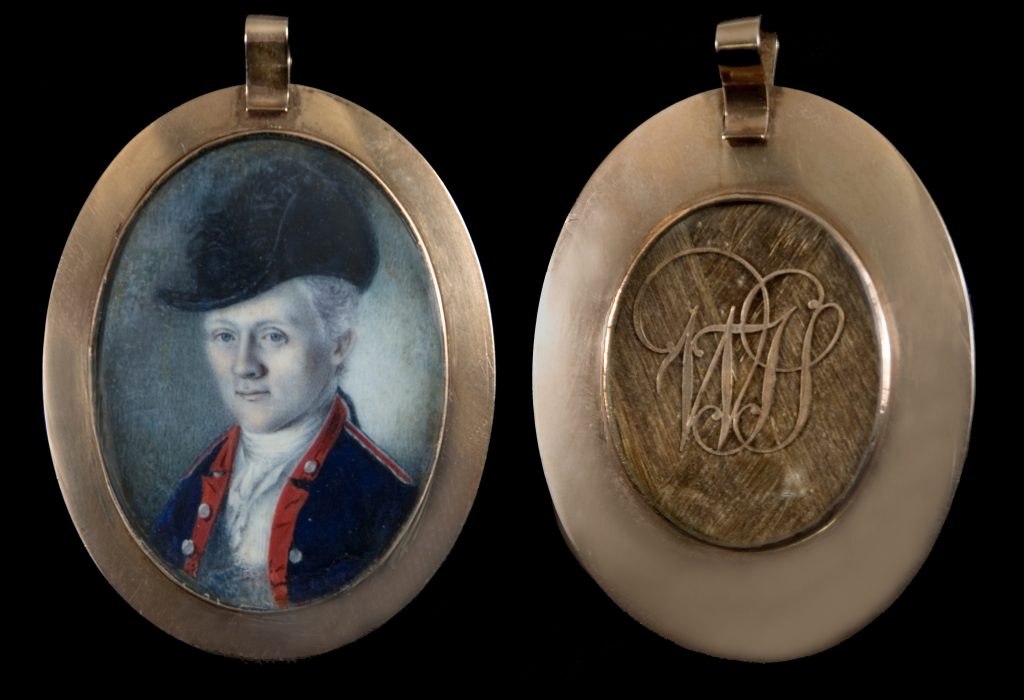
William Truman Stoddert
Charles Willson Peale (1741-1827)
ca. 1778Gift of Williams Swift Martin, 1984
William Truman Stoddert of Charles County, Maryland, joined the Maryland Continental Line in 1776, later serving as brigade major to his uncle, Brig. Gen. William Smallwood, and in the southern campaign. This watercolor-on-ivory portrait miniature pictures Stoddert in the uniform of a lieutenant in the Maryland Continental Line. The back of the gilt copper case reveals woven hair and the initials “WTS” in gold.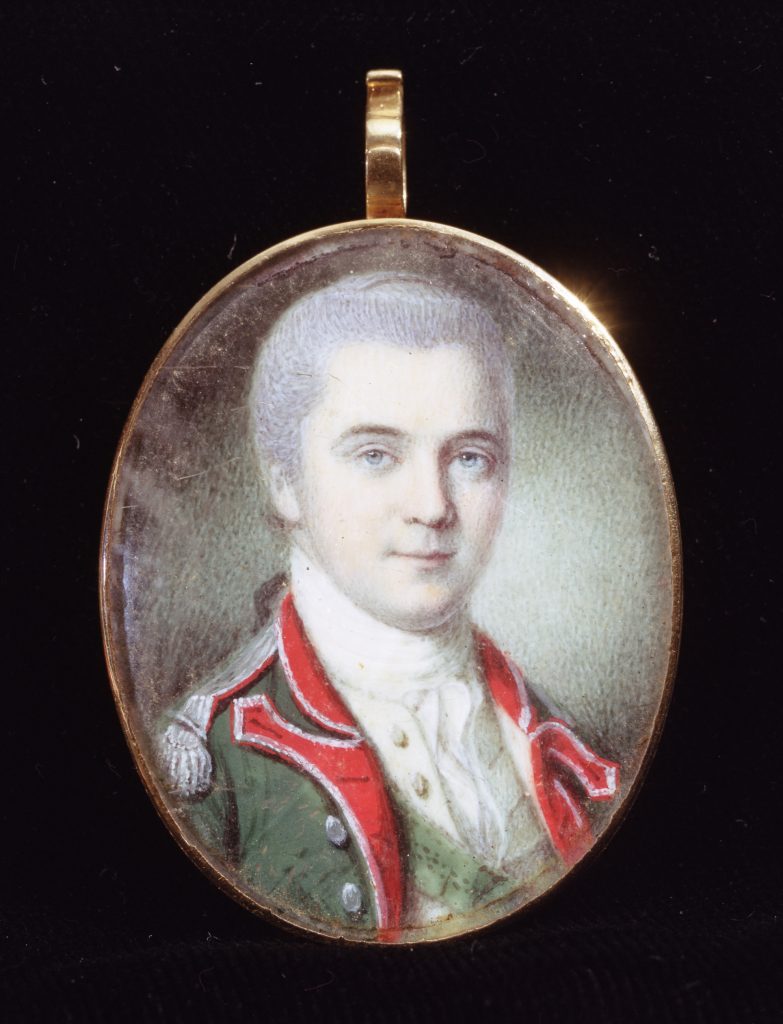
James Hamilton
Charles Willson Peale (1741-1827)
ca. 1778-1779Gift of the Society of the Cincinnati of the State of South Carolina, 2002
James Hamilton of Lancaster County, Pennsylvania, volunteered for a rifle company in 1776, then secured a commission in the Pennsylvania Continental Line. After ten months as a British prisoner in 1777-1778, Hamilton became an aide-de-camp to Maj. Gen. Arthur St. Clair. This portrait was painted during that time, as it depicts Hamilton wearing the green sash of an aide-de-camp with his Pennsylvania Continental Line uniform.